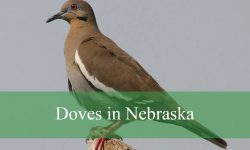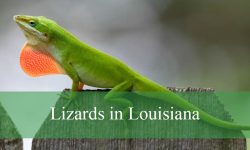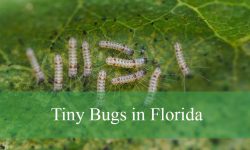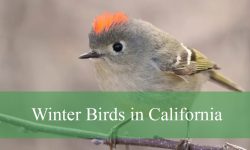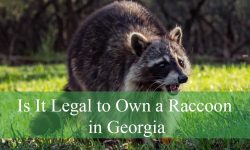Known as California cockroaches, a wide variety of cockroach species can be found throughout California. These hardy insects live well in a variety of settings, including crowded cities and dry deserts.
In California, cockroaches can be a source of health hazards for both businesses and homeowners due to allergies and contamination.
Comprehending the various varieties of cockroaches prevalent in this region, their behavioral patterns, and the obstacles they pose is crucial for proficient pest control and upholding a salubrious living space.
Different Types of Cockroaches in California
Oriental Cockroach
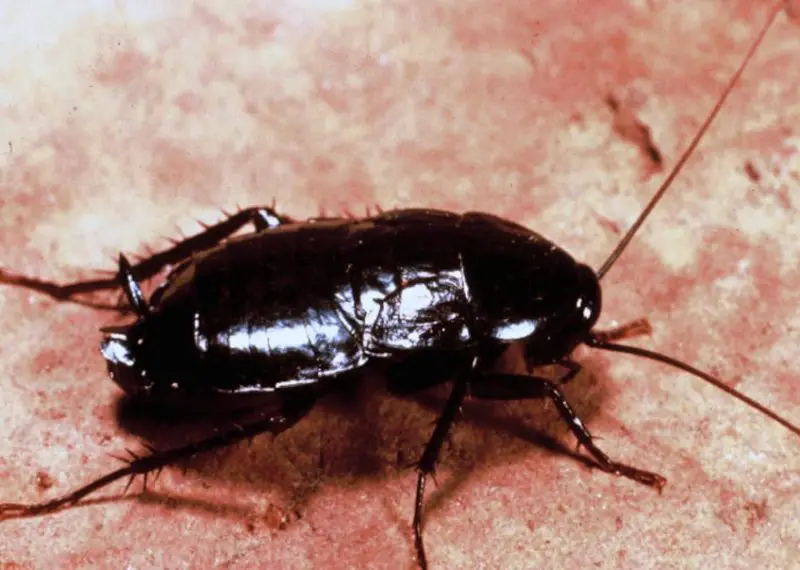
The resilient black and brown Oriental cockroach (Blatta orientalis) is a well-known pest. Because pesticides frequently do not damage the eggs laid by females, this species is very difficult to eradicate, letting the population to survive. Oriental roaches are thought to be hazardous to human health, with females being larger than males.
They bring bacteria into houses that might contaminate food because they flourish in moist, bacterially-rich places like basements and drains. Oriental cockroaches are a bothersome pest because of their propensity to transmit infections, which puts a serious risk to human health.
Turkestan Cockroach
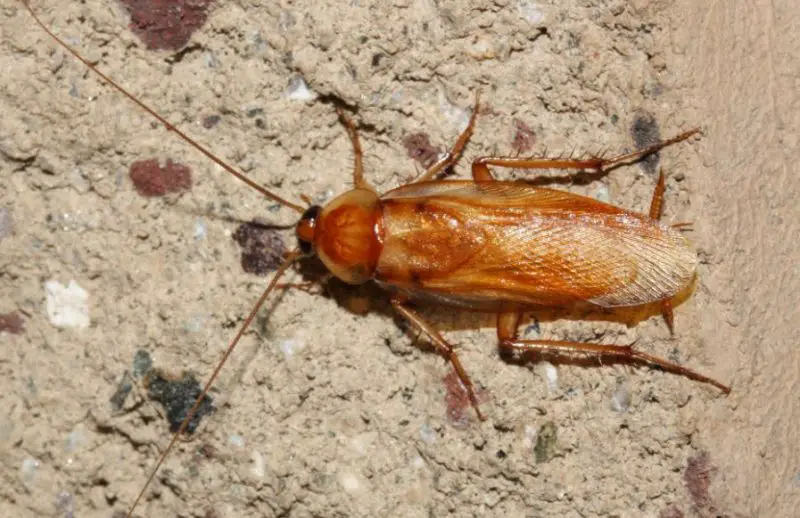
The Turkestan cockroach (Shelfordella lateralis) is typically an outdoor pest but can also be found indoors in warmer climates like California. Known for their destructive habits, these roaches are feared by many. They have distinctive dark red bodies with a rusty undertone and usually live in large numbers outside. However, they often enter homes in search of food.
Male Turkestan roaches are particularly problematic as they can fly, often toward light sources, which is how they commonly invade homes. Their ability to fly makes them a persistent pest, especially in California’s warm environment.
American Cockroach
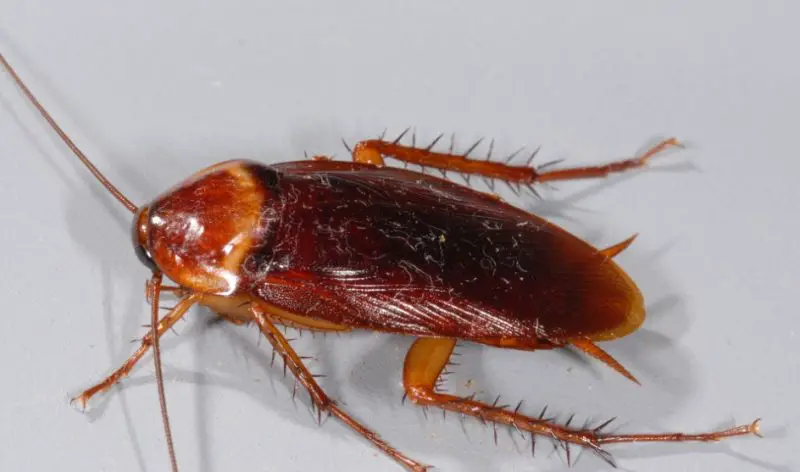
Despite coming from Africa, the American cockroach (Periplaneta americana) is the biggest and most prevalent type of bug in California. The life cycle of this pest includes three stages: egg, nymph, and adult. It usually reaches adulthood in a few weeks, at which point it begins a 600-day reproductive cycle.
A female American cockroach can lay up to 150 eggs annually during this period. This species, which is well-known for its adaptability and long lifetime, is a major annoyance throughout the United States due to its ability to thrive in a variety of conditions.
Three-lined Cockroach
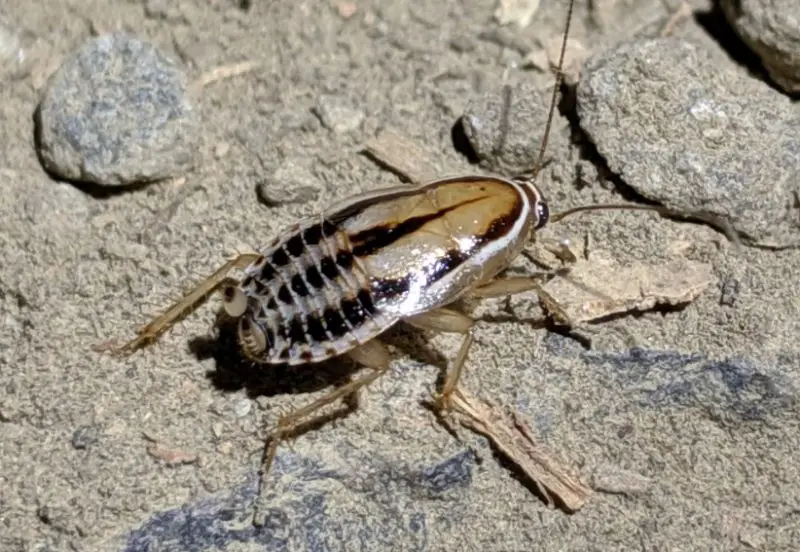
The Three-lined cockroach (Luridiblatta trivittata) is named for the distinct black and light stripes on its back, making it easily identifiable. Californians often spot this species in winter, with smaller nymphs appearing in spring. While these roaches prefer living outdoors and do not form indoor colonies, they are drawn to sweet foods, occasionally venturing indoors.
Despite being common, Three-lined roaches are difficult to eliminate as no specific pest control products are made for them. Since they aren’t officially considered pests, they are often overlooked, even though they can become a nuisance when food attracts them inside.
Smoky Brown Cockroach
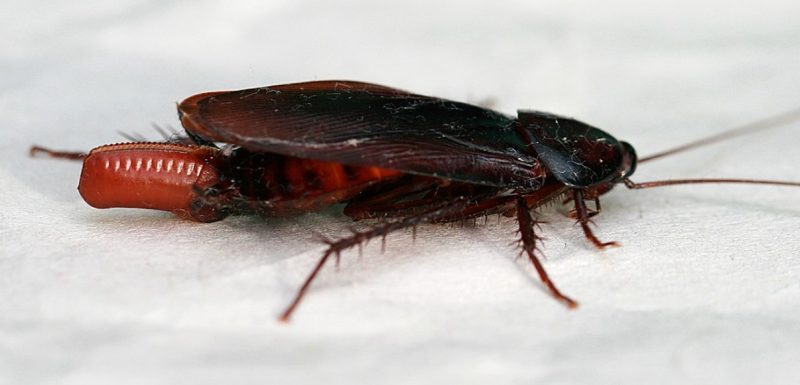
The Smoky Brown Cockroach (Periplaneta fuliginosa) is known for rapidly losing moisture, leading it to seek shelter indoors during hot weather. However, it is not suited to cold climates, primarily found in Southern U.S. states like California.
This roach has a varied diet, feeding on decomposing matter, pet food, and household leftovers. It enters homes to escape extreme temperatures or to access food sources, especially in areas where rotting food is present.
Eremoblatta subdiaphana
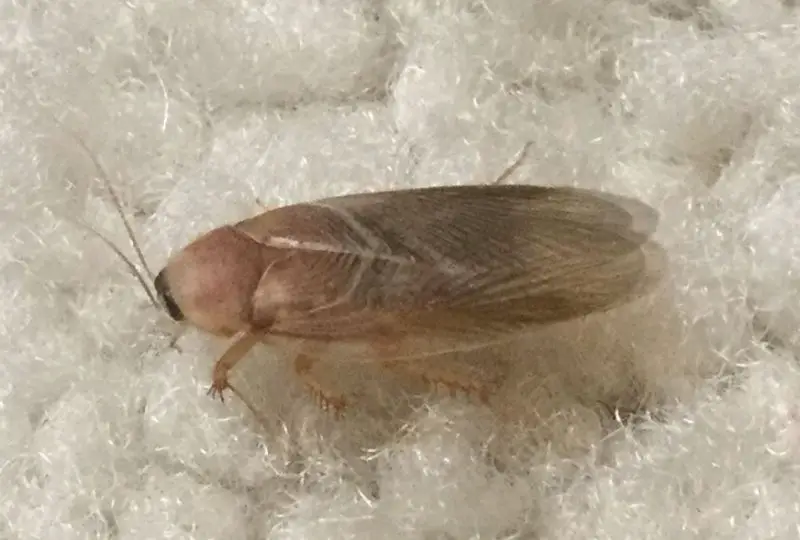
The Eremoblatta subdiaphana, or Hairy Desert Cockroach, is native to arid regions like California and a few Southern states, including Texas. This species is characterized by its pale golden color and hairy body. Its wings are brown and transparent, though it’s believed to fly only short distances.
Adapted to dry environments, the Hairy Desert Cockroach thrives in hot, desert-like climates. Its distinctive appearance makes it easy to identify in its natural habitat.
Desert Cockroach
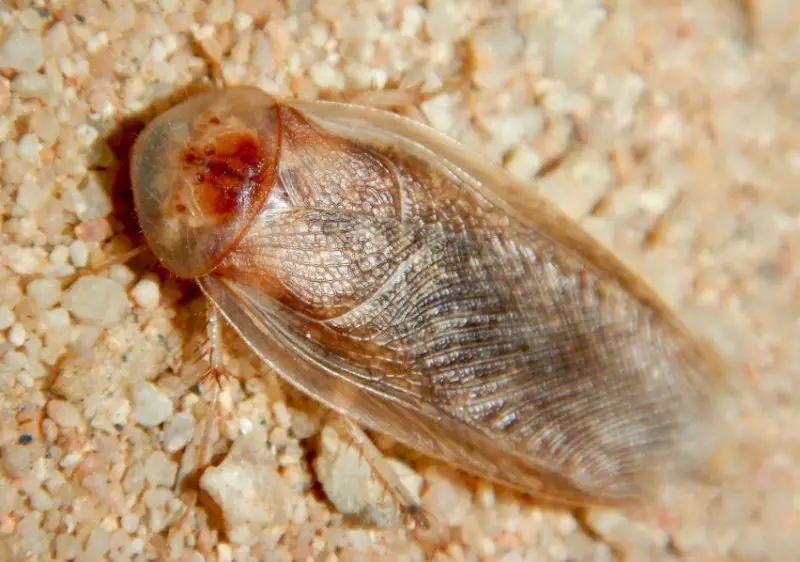
The Desert Cockroach (Arenivaga investigata) thrives in arid, desert climates. Its pale golden color often blends with the sand, making it hard to spot. Known for its ability to absorb moisture, this roach can take in up to 80% of its body weight from the air.
To prevent over-absorption, it produces a wax coating on its body. Interestingly, the roach generates warmth during moisture absorption, rather than from direct sunlight, making it well-adapted to dry environments.
Brown-banded Cockroach
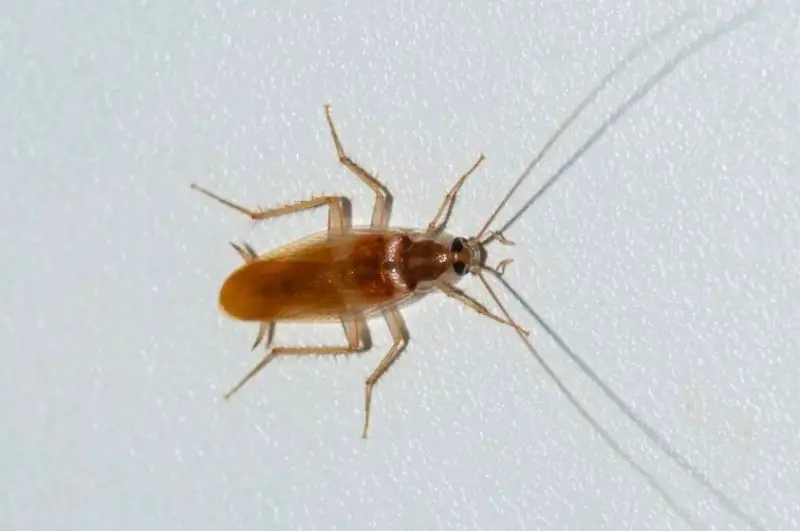
The Brown-banded Cockroach (Supella longipalpa) is a common pest in California, posing health risks if not controlled quickly. This species is especially problematic in shared buildings like apartments, easily traveling through cracks and under doors. Professional pesticide treatment is the most effective method for eliminating both adult roaches and their nymphs.
In other regions, natural predators like Comperia Merceti wasps feed on its nymphs. Failure to remove Brown-banded roaches can lead to medical issues, including allergies triggered by their excrement and shed skin.
Australian Cockroach
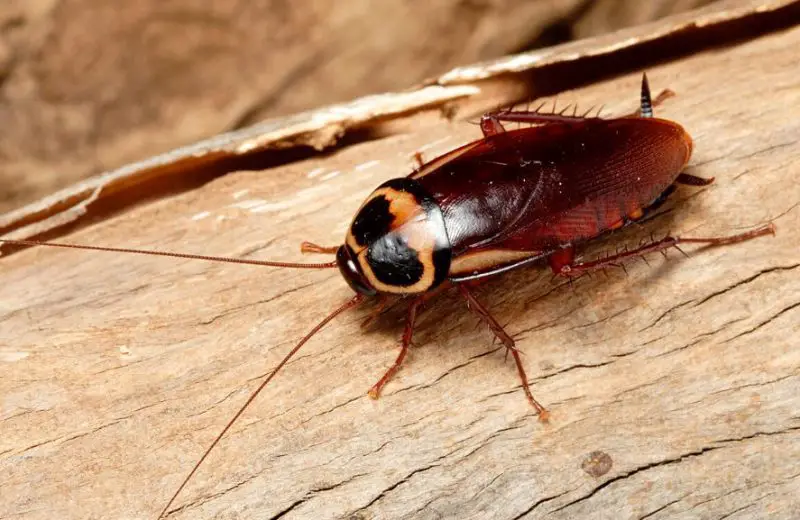
The Australian Cockroach (Periplaneta australasiae), unlike the Brown-banded roach, prefers outdoor living but is still linked to health risks such as food contamination and allergies from its excrement. This species thrives near homes, attracted by leftover food and garbage.
It can be identified by its brown body and distinctive brown head with two black markings. Professional pesticide treatments are effective for eliminating Australian cockroaches from yards and gardens, preventing them from becoming a health hazard around homes.
Arenivaga nalepae
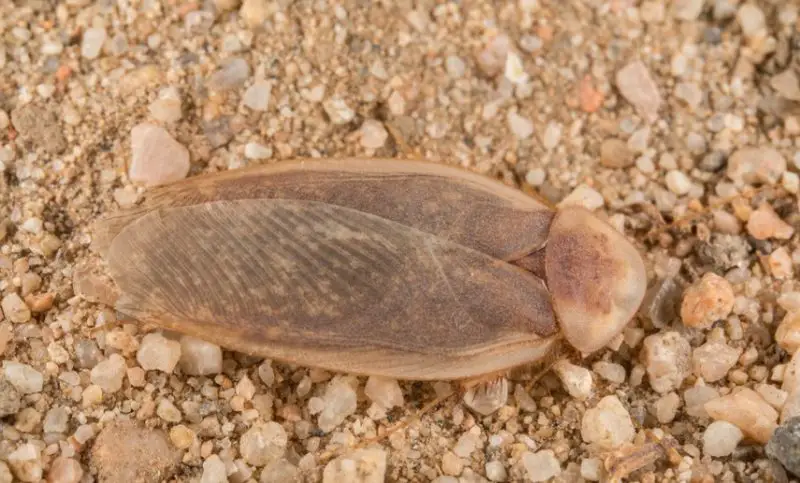
The Arenivaga nalepae roach inhabits the dry regions of California, particularly around San Felipe and Baja California Norte. It has an off-white, sand-like coloration and grows up to 20.2 mm in length.
This species is rarely found indoors, only seeking shelter in homes during colder temperatures. Adapted to arid environments, Arenivaga nalepae blends well with sandy surroundings and is typically not a household pest unless driven inside by weather changes.
Brown Cockroach
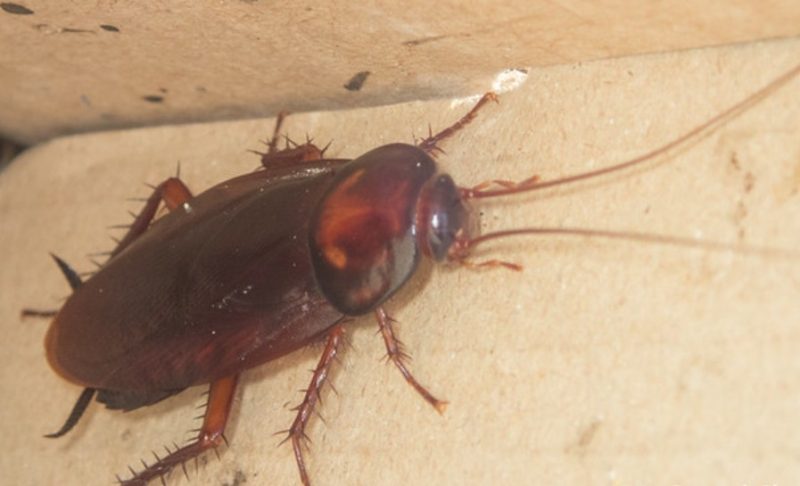
The Brown Cockroach (Periplaneta brunnea) is often mistaken for the American Cockroach due to their similar brown coloration, but it originates from Africa and features a shorter, wider body. Its brown body and head may sometimes have a reddish hue, and it can grow up to 2 inches long.
As a household pest, the Brown Cockroach thrives indoors near food sources, being an omnivore that consumes a variety of fruits, vegetables, and meats. It prefers damp, dark locations like basements or behind furniture. Although it lays only up to 24 eggs at a time, its indoor lifestyle poses health risks, necessitating extermination.
Western Wood Cockroach
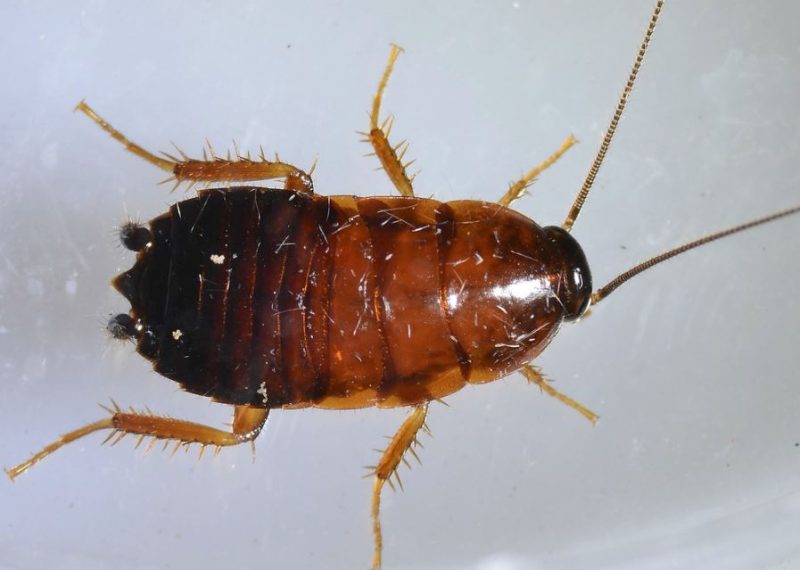
The Western Wood cockroach (Parcoblatta americana) is an invasive species in California, often seeking shelter in harvester ant nests. At night, these roaches feed on leftover food around the nests. They are primarily found in oak woods and grasslands where harvester ants thrive. With iron-red coloration, they rarely enter homes, but when they do, it’s usually because they are drawn to lights.
These roaches lead separate lives—females stay with nymphs, while males live independently. Though less likely to invade homes, they can become a nuisance in outdoor environments.
German Cockroach
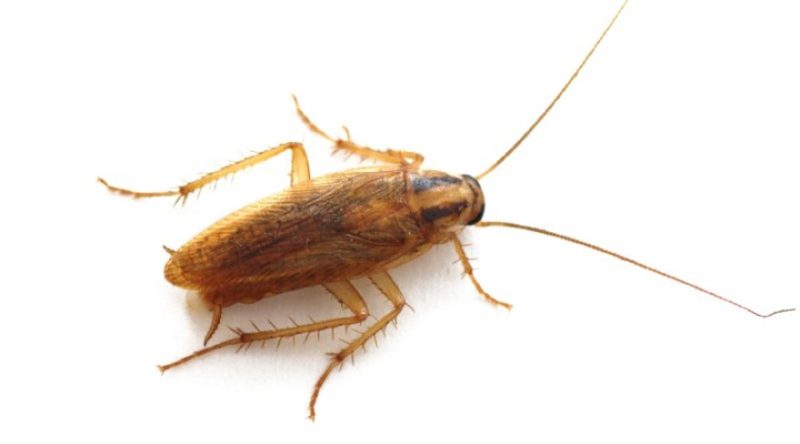
Due of its indoor habitat preference, the German cockroach (Blattella germanica) is one of the most problematic and feared pests. They only live for around 100 days from egg to adulthood, but because of their quick reproduction, they are very widespread, especially in Southern areas like Florida and California.
German cockroaches can be removed from the house using a variety of techniques, such as chemical treatments that would necessitate moving out. Although there are milder remedies, their spread is frequently attributed to inadequate sanitation. They are a constant annoyance to homeowners because of their hardiness and fondness for interior environments.
Surinam Cockroach
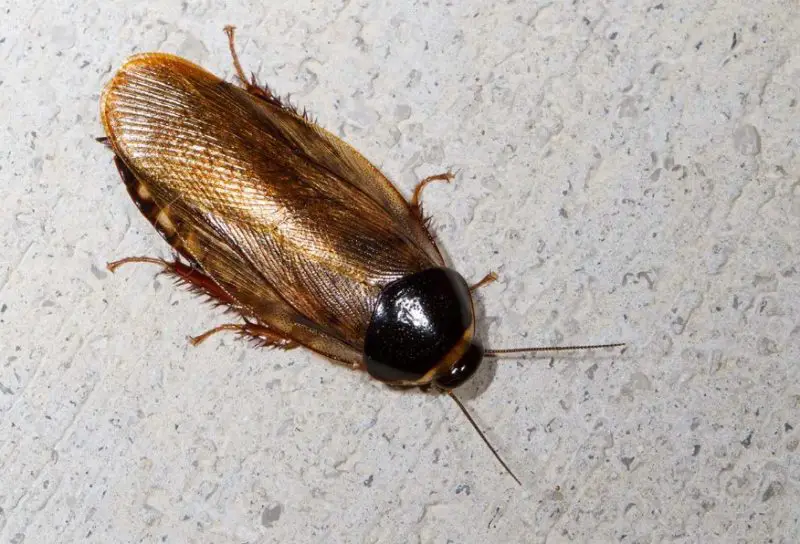
The Surinam cockroach (Pycnoscelus surinamensis), also known as the Greenhouse Cockroach, is a troublesome species primarily found in greenhouses. It hides during the day and emerges at night to feed on soft plants. While not considered a household pest, it is often associated with man-made structures and prefers outdoor environments near homes.
This roach thrives in areas with high moisture and low sanitation, often found in debris. Though rarely entering homes, plant sprays and other products are commonly used to control its presence, especially in greenhouse settings, where it can cause significant damage to plants.
Field Cockroach
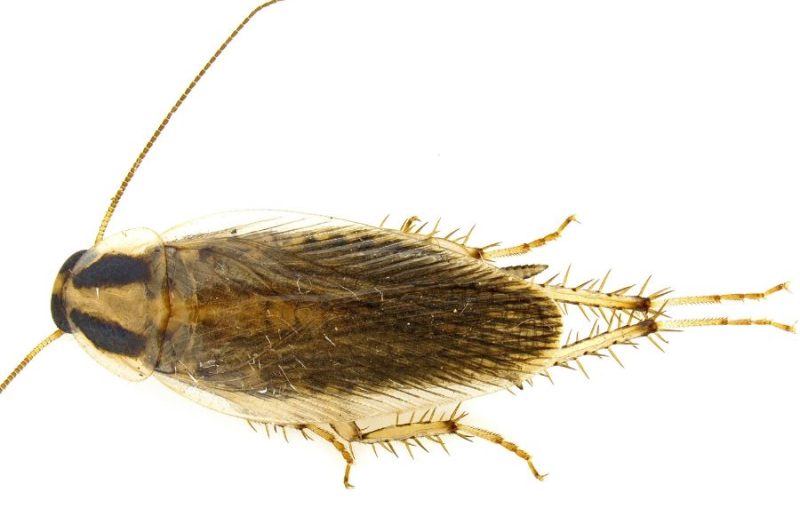
The Field Cockroach (Blattella vaga), native to Asia, has spread to North and Central America, often residing in dense vegetation. During hot, dry conditions, it may enter homes. This roach has a short lifespan, with some living up to 90 days.
It is commonly found in decomposing plant matter and is easily identifiable due to its shiny golden body and transparent white legs, standing out against the surrounding vegetation. Its distinct appearance makes it easy to spot.
Arenivaga tonkawa
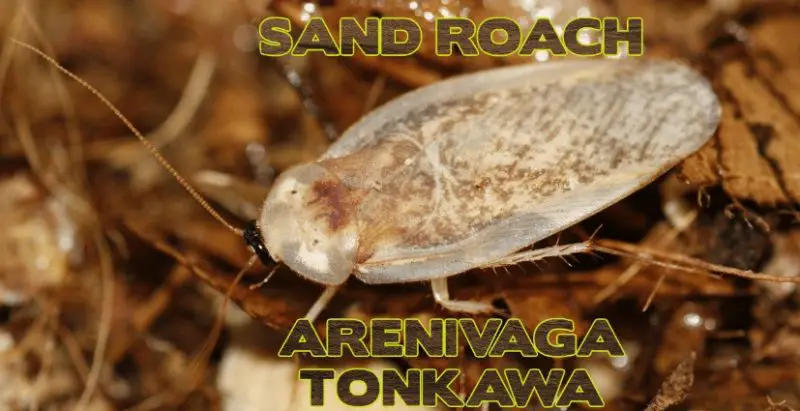
The Arenivaga tonkawa, a sand roach native to California and Texas, is brown with a rounded body in adulthood. Interestingly, in its early stages, it has a transparent body, allowing its internal organs to be visible. While females can fly short distances, males are unable to fly.
This species is often bred in containers as a food source, particularly for pets like lizards, due to its nutritional value and ease of cultivation.
Arenivaga sequoia
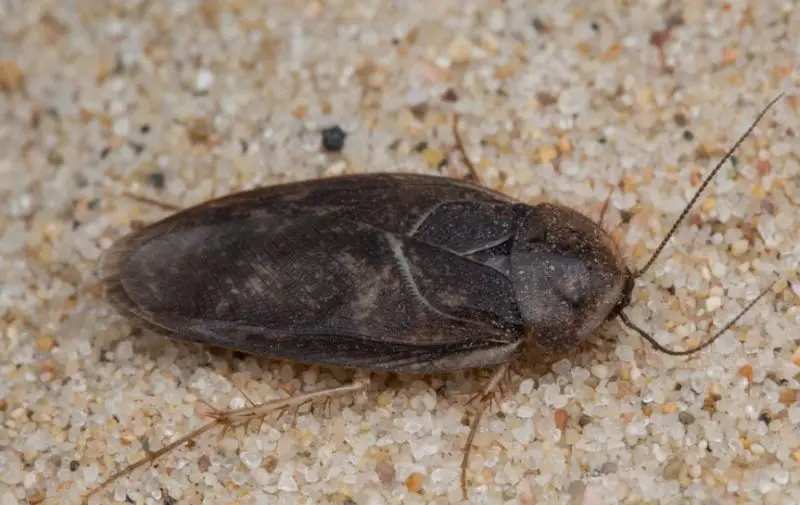
The Arenivaga sequoia is a roach species native to Southern and Western California. It exhibits a range of colors, typically chestnut or dark brown. One of its distinguishing features is its long wings, which are notably longer than its body, leading to the misconception that it can fly.
Despite its wing length, this species is not known for significant flight. Found exclusively in California, Arenivaga sequoia is well-adapted to the region’s specific climate.
Boll’s Sandroach
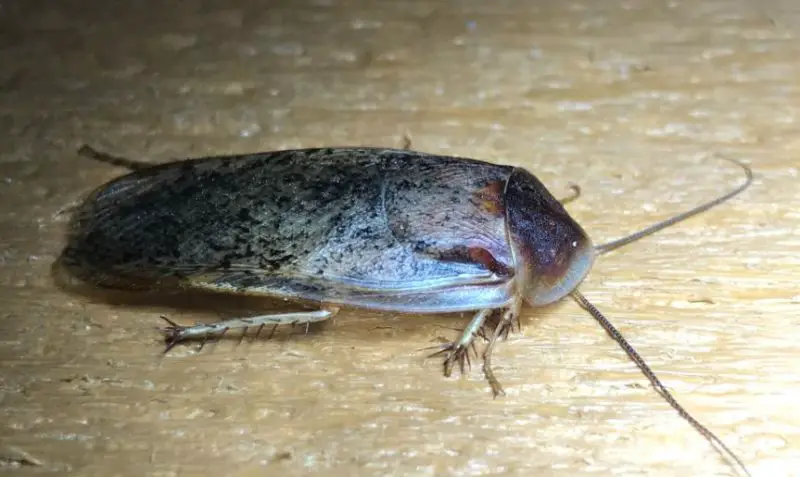
Boll’s Sandroach (Arenivaga bolliana), a member of the Corydiidae family, is commonly found in coastal California, favoring sunny areas near water sources. It has a tan, sand-like coloration with a striped body and small black markings, while its head is predominantly black. The roach’s legs are brown and hairy.
Its natural coloring provides excellent camouflage, making it difficult to spot on sandy terrain. This species thrives in warm, coastal environments, blending seamlessly into its surroundings.

